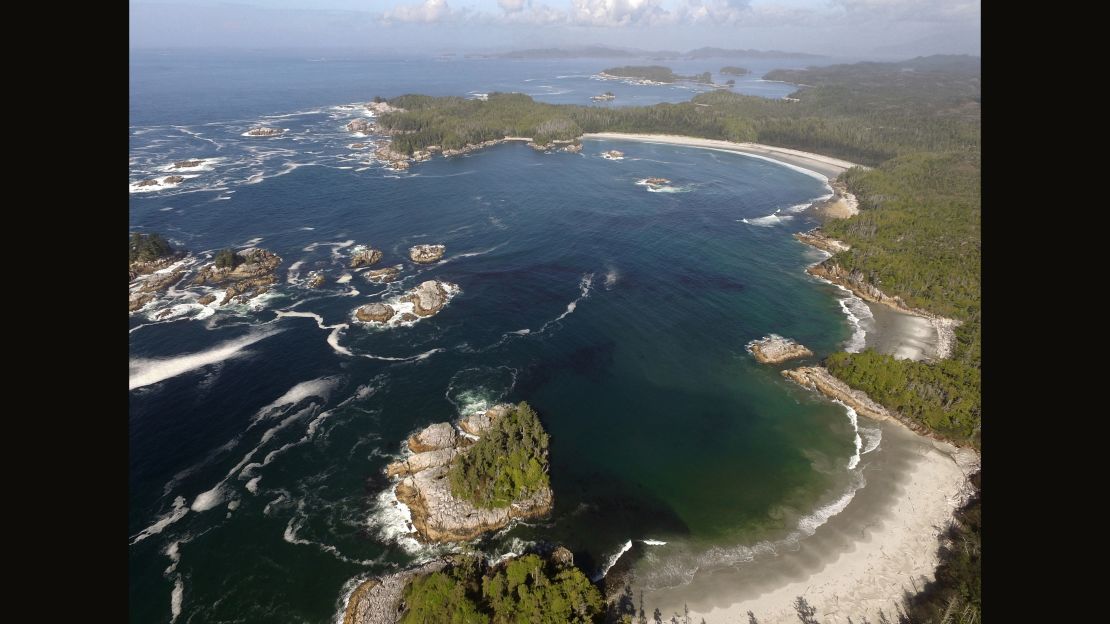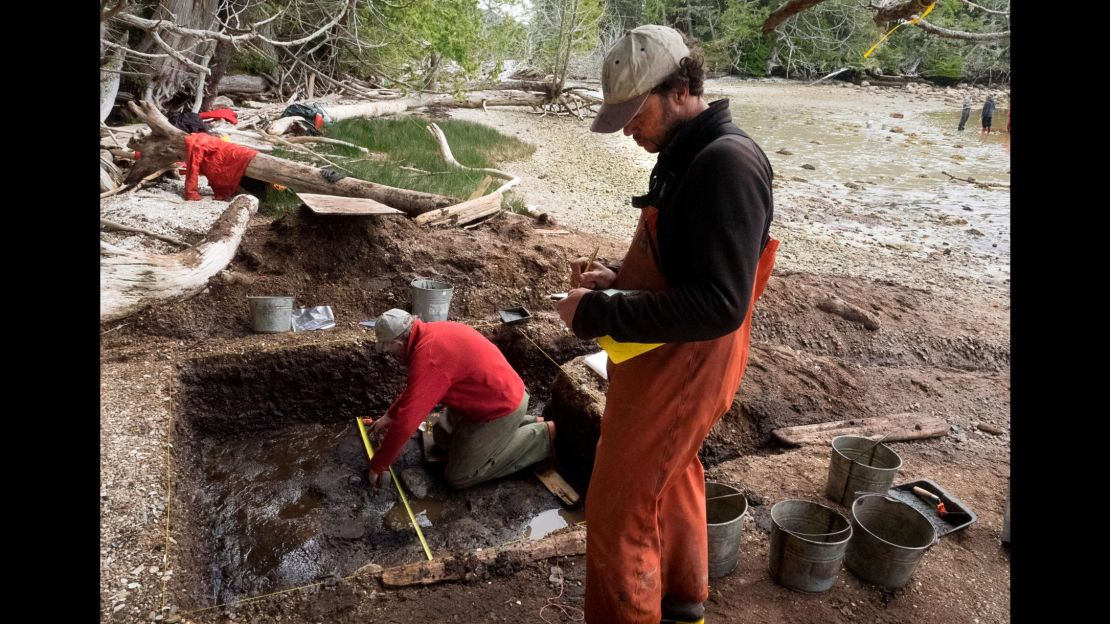Story highlights
Fossilized footprints on Canadian island are evidence of people there 13,000 years ago
The finding also suggests that these people used watercraft to reach the island
Searching the shoreline sediment of British Columbia’s Calvert Island, researchers uncovered 29 footprints that are 13,000 years old. The footprints belonged to two adults and a child, according to a study published Wednesday in the journal PLOS-ONE.
“Fossilized footprints are rarely found in archaeological sites, although are (known) from coastal areas where they are sometimes exposed by erosion,” Duncan McLaren, lead study author and assistant professor of anthropology at the University of Victoria and the Hakai Institute, wrote in an email.
During the last ice age, which ended around 11,700 years ago, many researchers believe, humans moved from Asia using a land bridge to reach North America – now the west coast of British Columbia and south coastal regions of Canada.
But it’s not an easy route for researchers to investigate. Today, Canada’s Pacific coast is covered with dense forests and can be reached only by boat. But Calvert Island was worth the trouble because during that ice age, the sea level there was between 6 and 9 feet lower than it is now.

The researchers were looking for archaeological evidence of plant fossils and deposits. They weren’t expecting to find footprints.
First, they found one. That changed the direction of their research, and during more excavations, they uncovered a total of 29 footprints. There were other partial footprint-like depressions, but evidence of trampling made them harder to discern.
The 29 footprints had distinct sizes, showing three barefoot individuals. Impressions of their arches, toes and heels were clearly visible. They would equate today with a woman’s size 8-9, a junior’s size 8 and a woman’s size 3. Some of the heel prints tend to drag, implying that they slipped in the shoreline mud.
They aren’t in a line but rather a congregation of footprints showing concentrated activity in the area. Some are side by side, suggesting that an individual stood with feet slightly apart, facing inland.
“Primarily the three different sizes of footprints found conjures up the image of a nuclear family or small group of people using the area,” McLaren wrote. “Most of the footprints face inland … and they may represent a place where people were disembarking from watercraft before moving to a drier area.”
This finding is particularly impactful because archaeological evidence of humans in the area during that time period is lacking. But their presence may explain other archaeological finds in nearby and surrounding areas.
“It shows that early peoples in the Americas were using watercraft to explore and thrive in outer coastal areas,” McLaren said. “It adds to the body of evidence that the coast was a viable means by which peoples reached the Americas during the last ice age.”
Going forward, he said, researchers are particularly interested in finding the area where these people lived.

“This line of research is really in its infancy on the coast,” McLaren said. “We are working to collect more information on areas that were ice free during the last ice age and reconstructing where sea level was at different times in different places. This paleo-environmental work will then be used to inform the search for early period sites along the formerly glaciated Pacific shoreline of Canada.”
These aren’t the oldest footprints found: Early human footprints in Africa have been dated to 3.6 million years ago. But the rarity of fossilized footprints, and where they were found, tells an interesting story.
“These tracks are faint, but the size, shape and number of tracks are convincing,” Neil Thomas Roach of the Department of Human Evolutionary Biology at Harvard University wrote in an email. Roach was unaffiliated with the study.
Join the conversation
“While the presence of modern humans along the Pacific coast of Canada 13,000 years ago shouldn’t be surprising, this intensive usage of this coastline environment that has not been shown before,” he said.
“I think this study raises more questions than it answers, which is a good thing. Only with further study and excavation of these shoreline surfaces will we fully understand how many track makers were present, what they were doing on these landscapes, and how important shoreline environments were to their survival.”

































































































































































